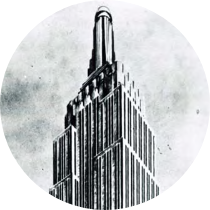Over many decades, Wire Reinforcement Institute (WRI) has been a trusted source of information in the welded wire industry. There was no simple, straight line of progression from the early inventors to the broad-scale use of the welded wire today. As expected of the early engineers and builders, there were several different design approaches to the reinforcement of concrete — particularly in floor slabs and pavements. Recent advances in technology have produced ever-increasing wire diameters and materials that can be welded together, enabling the product to be used in numerous structural components.
History
How WRI Revolutionized An Industry
Men of Steel: See The History of Wire Reinforcement Institute


1800s
Welded wire reinforcement has its first recorded use in Europe. By the late 1800s, the concept was starting to spread around the world. With the invention of a resistance welder in 1855, interest pushed forward.


1900s
At the start of the new century, welded wire mesh was produced and was being used in many industries in the 1900s.


1930s
In 1930, the Wire Fabric Institute was founded in Washington, D.C. and a month later, the founding members changed its name to Wire Reinforcement Institute (WRI).


1940s
In the early 1940s, wire fabric played a critical role in World War II and tons were shipped overseas to supplement combat and infrastructure operations. After the war, shipments by WRI producers rose because of economic upturn.


1950s
In the mid-1950s, considerable substantive research was reported during this period on the effectiveness of welded wire fabric. Application in concrete pipe began to represent a major market.


1960s
A number of states began constructing turnpikes using a mesh-dowel design. Later, with the onset of the National System of Defense and Interstate System, steel mesh found its way into sophisticated paving programs. Newer equipment built in Europe and the U.S. provided increased production capacity and capability of producing heavier fabrics and bending of wire. Also, tonnage production increased exponentially.


1970s
The 1970s was a time of research for WRI and as shipments started to increase for light building fabric, the leaders of the institute were always looking to improve the industry. ACI 318 Building Code was also adopted as a guide for calculation.


1980s
WRI joined a research program studying the seismic response to large deformations on full-scale beam/column joints. This concluded that specimens with high-strength wire performed as well as conventionally designed beams/joints, while using less steel. Across the world, researchers were publishing similar results.


1990s
WRI joined a research program studying the seismic response to large deformations on full-scale beam/column joints. This concluded that specimens with high-strength wire performed as well as conventionally designed beams/joints, while using less steel. Across the world, researchers were publishing similar results.


Now
WRI continues to be involved in significant research and is considered an expert in the welded wire reinforcement industry.

